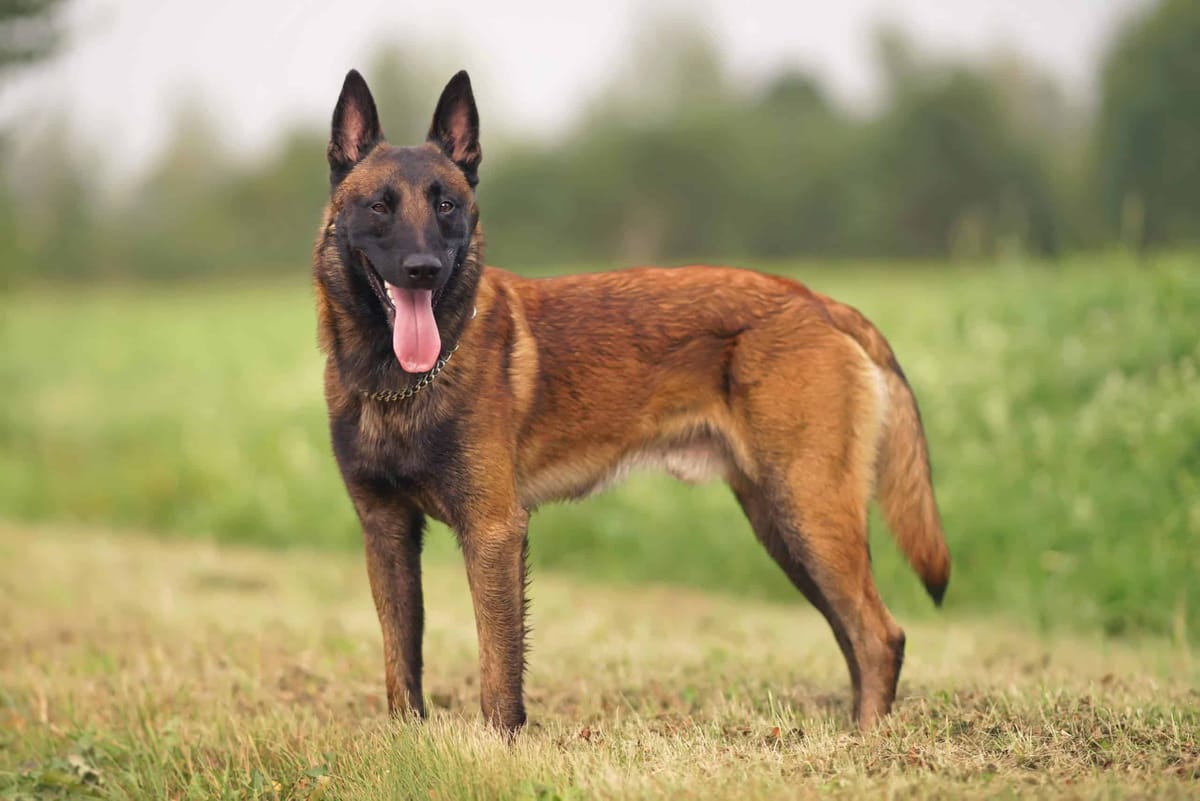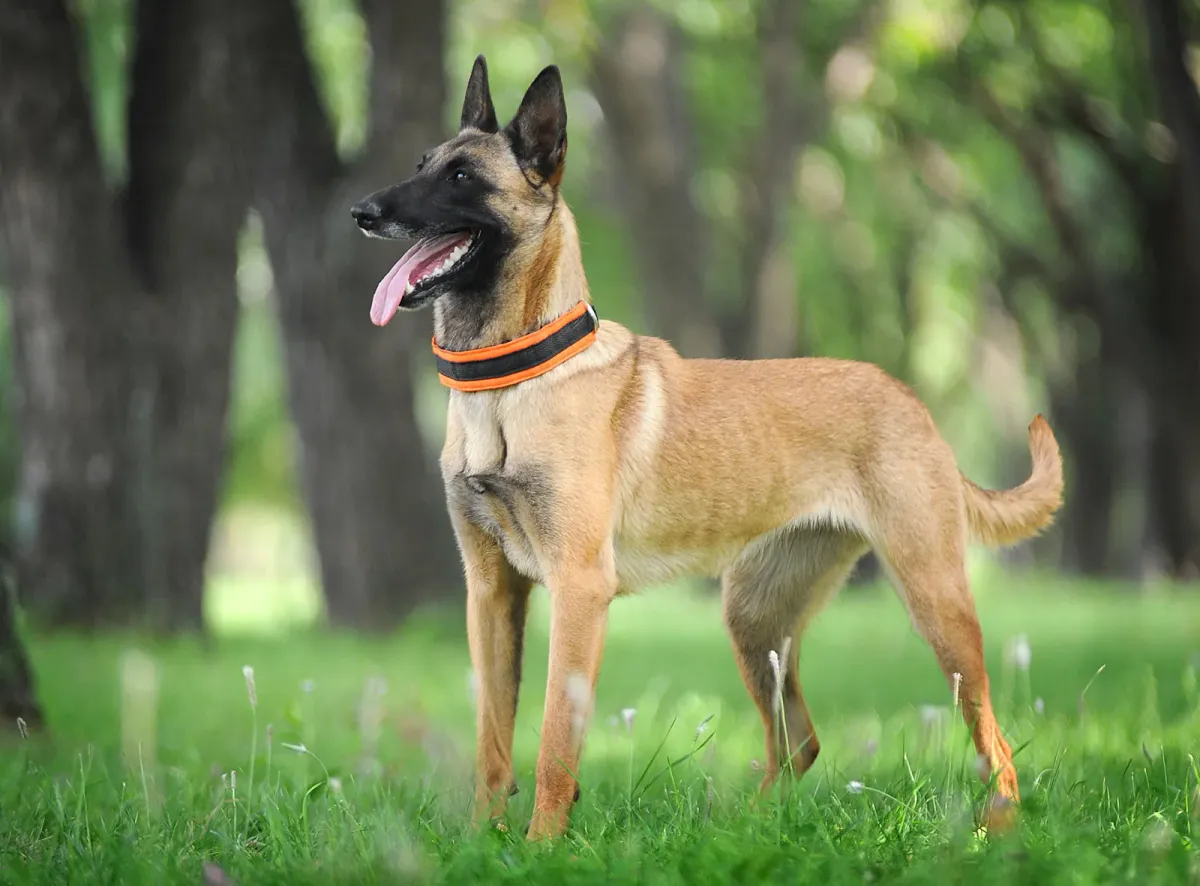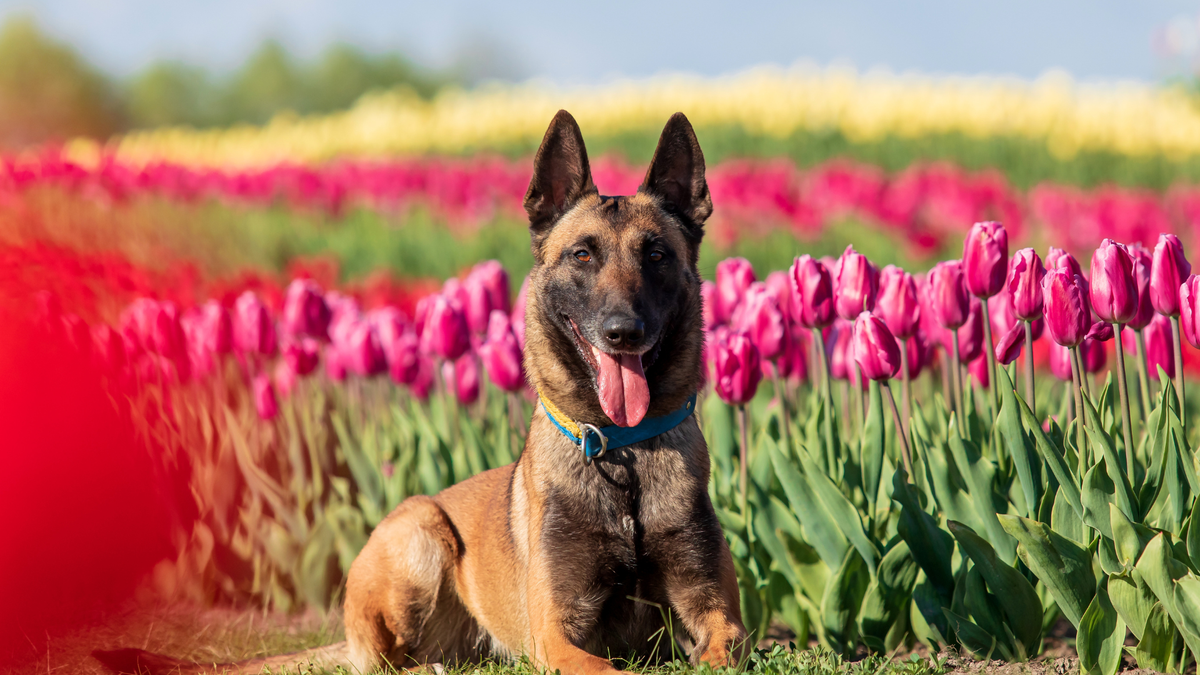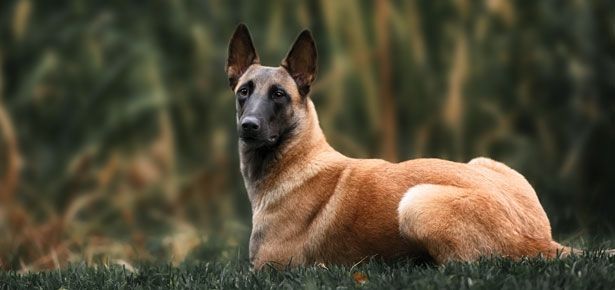Belgian Malinois is a breed of dog that is known for its brilliance, loyalty, and versatility. Originally bred as herding dogs, Belgian Malinois have become increasingly popular as police and military dogs due to their exceptional work ethic and trainability. However, with their rising vogue, the cost of owning a Belgian Malinois has also increased, leaving many potential owners wondering about the Belgian Malinois price.

The cost of a Belgian Malinois can vary depending on many factors, including the dog's age, pedigree, and training. On average, a Belgian Malinois puppy can cost anywhere from $1,500 to $2,500, with some breeders charging upwards of $5,000 for a puppy from a champion bloodline. Additionally, the cost of training a Belgian Malinois can also be significant, with some programs costing several thousand dollars. Despite the high value, many owners find that the loyalty, intelligence, and versatility of the breed make the investment well worth it.
Understanding the Belgian Malinois
Belgian Malinois is a breed of dog that originated in Belgium. They are known for their intelligence, athleticism, and loyalty. This breed was originally bred for herding, but they are now commonly used as protection dogs and in law enforcement.
Breed Characteristics
Belgian Malinois are medium-sized dogs, with males typically weighing between 60-80 pounds and females weighing between 40-60 pounds. They have a short, straight coat that is typically fawn or mahogany with black markings. Their ears are erect, and their tails are typically docked.
Temperament and Energy Levels
Belgian Malinois are known for their high-energy and protective nature. They are loyal to their family and can be trained to be excellent protection dogs. However, their high energy levels also mean that they require a lot of exercise and mental stimulation. They are not recommended for families who cannot provide them with enough exercise and attention.
Belgian Malinois are also highly intelligent and trainable. They excel in obedience training and can be trained for multiple tasks, including search and rescue, tracking, and agility. However, their intelligence also means that they can become bored easily and may engage in destructive behavior if not given enough mental stimulation.
Overall, the Belgian Malinois is a highly capable and loyal breed that requires a lot of attention and exercise. They are best suited for experienced dog owners who can provide them with the training and attention they require.
Initial Costs of Belgian Malinois Ownership
When considering adding a Belgian Malinois to your family, it's significant to understand the initial costs associated with ownership. This includes the price of the puppy or adult dog, as well as other factors that can affect the overall cost.
Price Range for Puppies
Belgian Malinois puppies can range in price from $1,000 to $3,500 or more, depending on various factors. Reputable breeders who prioritize health and temperament will typically charge more for their puppies. Bloodline, location, size, colors, markings, and gender can also affect the price.
Factors Affecting Puppy Price
When purchasing a Belgian Malinois puppy, several factors can affect the price. A reputable breeder who has put time and effort into breeding healthy, well-tempered dogs will charge more for their puppies. Additionally, puppies from champion bloodlines or those with unique coat colors or markings may also be priced higher.
Cost of Adopting an Adult Dog
Adopting an adult Belgian Malinois can be a more affordable option than purchasing a puppy. The cost of adoption can vary depending on the organization you adopt from, but it typically ranges from $100 to $500. Keep in mind that adult dogs may require more training and socialization than puppies, which can add to the overall cost of ownership.
Overall, the initial cost of Belgian Malinois ownership can vary depending on several factors. It's crucial to do your research and choose a reputable breeder or adoption organization to ensure that you are getting a healthy and well-tempered dog.

Ongoing Expenses
Belgian Malinois are not only an initial investment but also require ongoing expenses to ensure their health and well-being. Here, we will break down the various costs associated with owning a Belgian Malinois.
Food and Nutrition
Belgian Malinois require a high-quality diet to maintain their health and energy levels. On average, owners can expect to spend around $50-$100 per month on dog food, depending on the brand and quality. It is required to choose a dog food that is specifically formulated for active breeds like the Belgian Malinois and to avoid foods with fillers and artificial ingredients.
Routine Veterinary Care
Routine veterinary care is essential to keep your Belgian Malinois healthy and prevent potential health issues. It includes regular check-ups, vaccinations, and preventative medications like flea and tick preventatives. On average, owners can expect to spend around $200-$400 per year on routine veterinary care.
Grooming and Hygiene
Belgian Malinois have a short, dense coat that sheds moderately year-round. Regular brushing and occasional baths can help keep shedding under control and maintain a healthy coat. On average, owners can expect to spend around $50-$100 per year on grooming supplies.
Training and Socialization
Belgian Malinois are intelligent and highly trainable but require consistent training and socialization from a young age to prevent behavioral issues. This may include obedience classes, agility training, and socialization with other dogs and people. On average, owners can expect to spend around $100-$200 per year on training and socialization.
Overall, the ongoing expenses of owning a Belgian Malinois can range from $400-$800 per year, not including unexpected medical expenses or pet insurance. It is necessary to budget for these expenses and provide the necessary care to ensure your Belgian Malinois lives a happy and healthy life.
Additional Costs
Belgian Malinois are high-energy and intelligent dogs that require a lot of care and attention. In addition to the initial purchase price of the dog, there are several other costs to consider.
Insurance and Emergency Care
It is critical to have insurance for your Belgian Malinois in case of unexpected accidents or illnesses. The cost of insurance varies depending on the coverage and provider, but it is typically between $30 and $50 per month. In addition to insurance, emergency care can be costly. It is essential to have a plan in place for emergencies, which may include setting aside funds or having a credit card with a high limit.
Accessories and Supplies
Belgian Malinois require several accessories and supplies to keep them healthy and happy. These include a collar, leash, dog bed, brush, crate, microchip, and ID tag. The cost of these items varies depending on the quality and brand, but it is essential to invest in high-quality items that will last. A collar and leash can cost between $20 and $50, while a dog bed can cost between $50 and $150. A crate can cost between $50 and $200, depending on the size and materials.
Environmental Maintenance
Belgian Malinois are active dogs that require a lot of exercise and outdoor time. This means that environmental maintenance is important to keep your dog healthy and safe. It includes regular nail trimming, cleaning up after your dog with a pooper scooper, and keeping up with licensing and other legal requirements. The cost of these items varies depending on the location and requirements, but it is demanded to budget for these costs. A nail clipper can cost between $10 and $20, while a pooper scooper can cost between $15 and $30.
Overall, the additional costs of owning a Belgian Malinois can add up quickly. So, invest in high-quality items to ensure the health and happiness of your dog.
Breeder and Adoption Considerations
When considering getting a Belgian Malinois, there are a few significant considerations to keep in mind. One of the most important is whether to get a dog from a breeder or adopt one from a shelter or rescue organization.
Choosing a Reputable Breeder
If you decide to get a Belgian Malinois from a breeder, it is needed to choose a reputable one. Look for breeders who are members of the American Kennel Club (AKC) or other reputable breed organizations. Reputable breeders will also be happy to provide you with proof of health screenings and registration papers for the dog's pedigree.
It is also required to ask about the breeder's policies regarding spaying or neutering, as well as any health guarantees they may offer. A good breeder will also deliver you with information about the breed and be available to answer any questions you may have.
Adoption Process and Rehoming
If you decide to adopt a Belgian Malinois, many shelters and rescue organizations specialize in the breed. These organizations can provide you with a trained dog that has already been spayed or neutered and may have received basic obedience training.
When adopting a dog, it is essential to ask about the dog's history and any behavior issues they may have. You should also be prepared to supply information about your lifestyle and home environment to ensure that the dog is a good fit for your family.
If you are considering rehoming a Belgian Malinois, it is crucial to do so responsibly. You should never give away a dog for free, as this can attract people who may not be able to provide a good home. Instead, consider working with a reputable rescue organization that can help you find a new home for your dog.
Health and Well-being
Common Health Issues
Belgian Malinois are generally a healthy breed, but like all dogs, they can be prone to specific health issues. Some common health problems that may affect Belgian Malinois include hip dysplasia, elbow dysplasia, and progressive retinal atrophy. To ensure that your Belgian Malinois stays healthy, it is critical to schedule regular health screenings with a veterinarian.
Hip dysplasia is a genetic condition that affects the hip joint, causing it to develop abnormally. Elbow dysplasia is a similar condition that affects the elbow joint. Both conditions can cause pain and discomfort for the dog and may lead to arthritis later in life. Regular health screenings can help detect these conditions early, allowing for prompt treatment.
Progressive retinal atrophy is a genetic disorder that affects the eyes, causing them to gradually deteriorate over time. It can lead to blindness in some cases. Regular eye exams can help detect this condition early, allowing for appropriate treatment.
Exercise and Activities
Belgian Malinois are a high-energy breed that requires plenty of exercise and activities to stay healthy and happy. They excel at running, hiking, swimming, and agility, and enjoy playing with toys. It is vital to provide your Belgian Malinois with plenty of opportunities to exercise and play.
Regular exercise and activities can help prevent obesity and other health issues, and can also help keep your Belgian Malinois mentally stimulated. In addition to physical exercise, it is critical to provide your Belgian Malinois with a healthy diet and regular deworming and teeth cleaning to ensure their overall health and well-being.
Therefore, Belgian Malinois is generally a healthy breed, but like all dogs, they can be prone to typical health issues. Regular health screenings and exercise can help keep your Belgian Malinois healthy and happy.
Belgian Malinois as Working Dogs
Roles and Responsibilities
Belgian Malinois are highly regarded for their versatility in different working roles. They are often used as police dogs, military dogs, search and rescue dogs, and personal protection dogs. These dogs are also great for herding livestock, as they possess a natural herding instinct.
Their protective instinct is one of their strongest traits. They are known to be fiercely loyal and protective of their owners and their territory. This makes them excellent guard dogs for homes and businesses.
Training for Specialization
Belgian Malinois require proper training to excel in their specialized roles. Obedience training is essential for all dogs, but it is especially needed for working dogs. They must be able to follow commands and respond quickly to their handler's instructions.
In addition to obedience training, specialized training is required for each role. For example, police dogs must be trained in tracking and apprehension techniques. Search and rescue dogs must be trained in scent detection and agility. Personal protection dogs must be trained in bite-work and defensive tactics.
Hence, Belgian Malinois is a perfect choice for those looking for a versatile and loyal working dog. Proper training and socialization are the keys to ensuring that these dogs excel in their specialized roles.
Conclusion
The price of a Belgian Malinois is influenced by various factors, including pedigree, age, training, and physical attributes. While the initial cost of buying a puppy is significant, owners should also budget for long-term expenses such as veterinary care, training, and maintenance. Finding a reputable breeder is crucial to ensuring a healthy and well-adjusted dog, but adoption or rescue can also provide loving homes for Belgian Malinoiss in need.
Want to know more about the Belgian Malinois?






